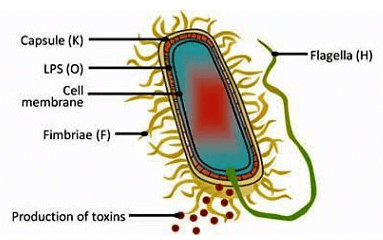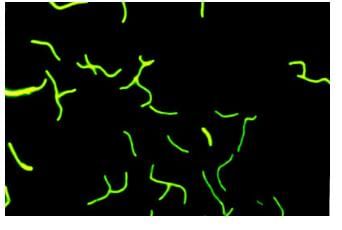NEET Exam > NEET Notes > NCERT Exemplar & Revision Notes for NEET > Solved Examples: Biological Classification
Solved Examples: Biological Classification | NCERT Exemplar & Revision Notes for NEET PDF Download
Q.1. Which one of the following organisms is not an example of eukaryotic cells? (CBSE PMT 2011)
(a) Paramecium caudatum
(b) E. coli
(c) Euglena viridis
(d) Amoeba proteus
Ans: b
Solution:
E. coli is a prokaryotic cells gram negative bacteria.
Q.2. In eubacteria, a cellular component that resembles eukaryotic cells is (CBSE PMT 2011)
(a) Plasma membrane
(b) Nucleus
(c) Ribosome
(d) Cell wall
Ans: a
Solution:
Eubacteria are prokaryotic but eubacteria are enclosed by plasma membrane like eukaryotic cells.
Q.3. Organisms called Methanogens are most abundant in a (CBSE PMT 2011)
a) Sulphur rock
b) Cattle yard
c) Polluted stream
d) Hot spring
Ans: b
Solution:
Methanogens are archaebacteria abundant in cattle yard and paddy fields.
The document Solved Examples: Biological Classification | NCERT Exemplar & Revision Notes for NEET is a part of the NEET Course NCERT Exemplar & Revision Notes for NEET.
All you need of NEET at this link: NEET
FAQs on Solved Examples: Biological Classification - NCERT Exemplar & Revision Notes for NEET
| 1. What is biological classification? |  |
Ans. Biological classification is the process of categorizing and organizing living organisms into groups based on their characteristics and relationships. It helps in understanding the diversity of life and provides a systematic way to study and communicate about different species.
| 2. What is the importance of biological classification? |  |
Ans. Biological classification is important because it allows scientists to identify and name new species, understand the evolutionary relationships between organisms, and study the characteristics and traits shared by different groups of organisms. It also helps in conservation efforts by providing a framework for assessing the biodiversity of an ecosystem.
| 3. How do scientists classify organisms? |  |
Ans. Scientists classify organisms using a hierarchical system called taxonomy. This system includes various levels such as kingdom, phylum, class, order, family, genus, and species. Organisms are grouped based on shared characteristics and evolutionary relationships. Modern classification methods also use genetic and molecular data to determine relationships between organisms.
| 4. What are the main kingdoms in biological classification? |  |
Ans. The main kingdoms in biological classification are:
1. Kingdom Monera: Includes prokaryotic organisms such as bacteria.
2. Kingdom Protista: Includes eukaryotic organisms that do not fit into other kingdoms, such as amoebas and algae.
3. Kingdom Fungi: Includes organisms such as mushrooms and yeasts, which obtain nutrients by decomposing organic matter.
4. Kingdom Plantae: Includes multicellular organisms that produce their own food through photosynthesis, such as trees and flowers.
5. Kingdom Animalia: Includes multicellular organisms that obtain nutrients by consuming other organisms, such as mammals, birds, and insects.
| 5. How does biological classification help in understanding evolutionary relationships? |  |
Ans. Biological classification helps in understanding evolutionary relationships by grouping organisms based on their shared characteristics and ancestry. By studying the similarities and differences between different groups of organisms, scientists can reconstruct the evolutionary history and trace the common ancestors of different species. This information is crucial for understanding how species have evolved over time and how they are related to each other.
Related Searches
















